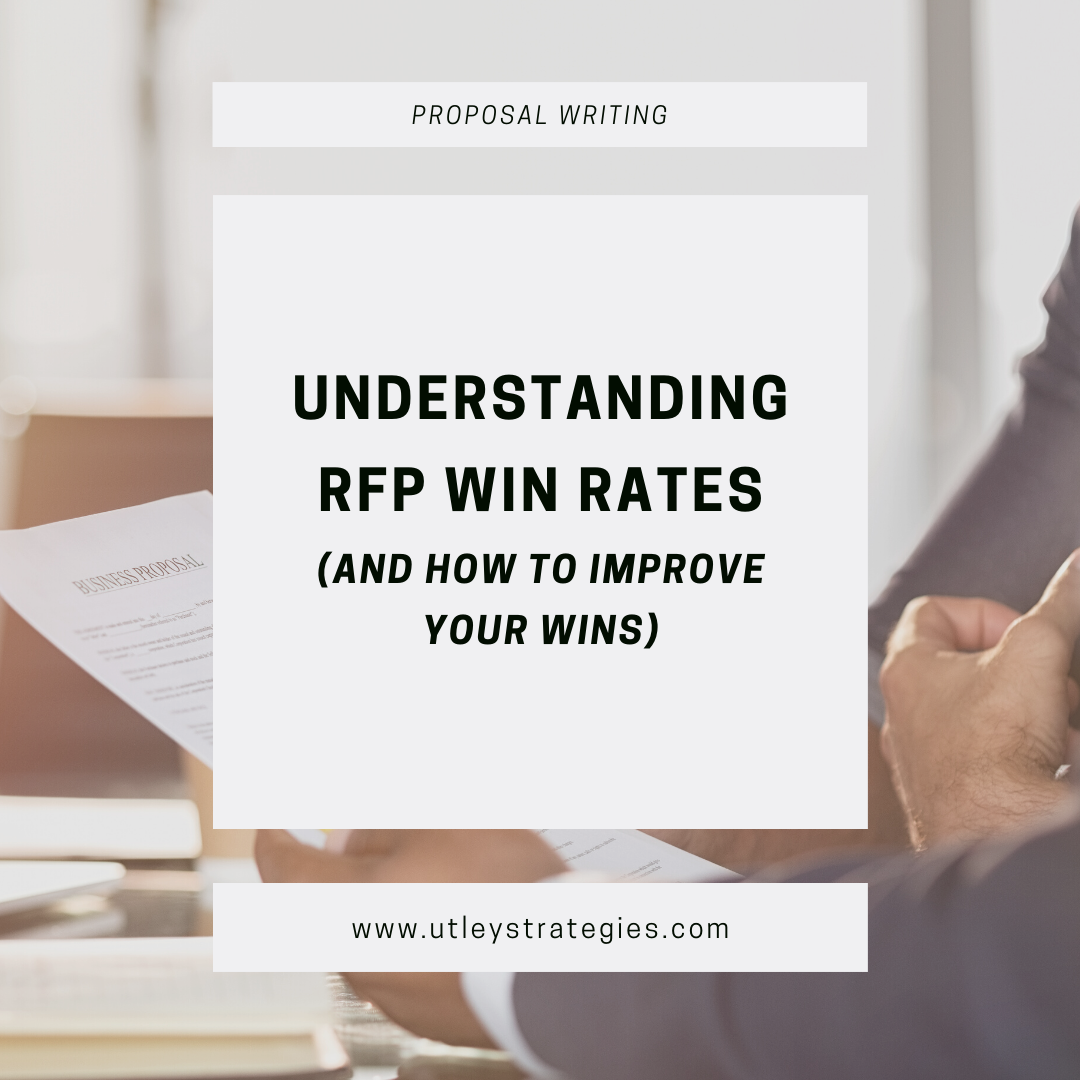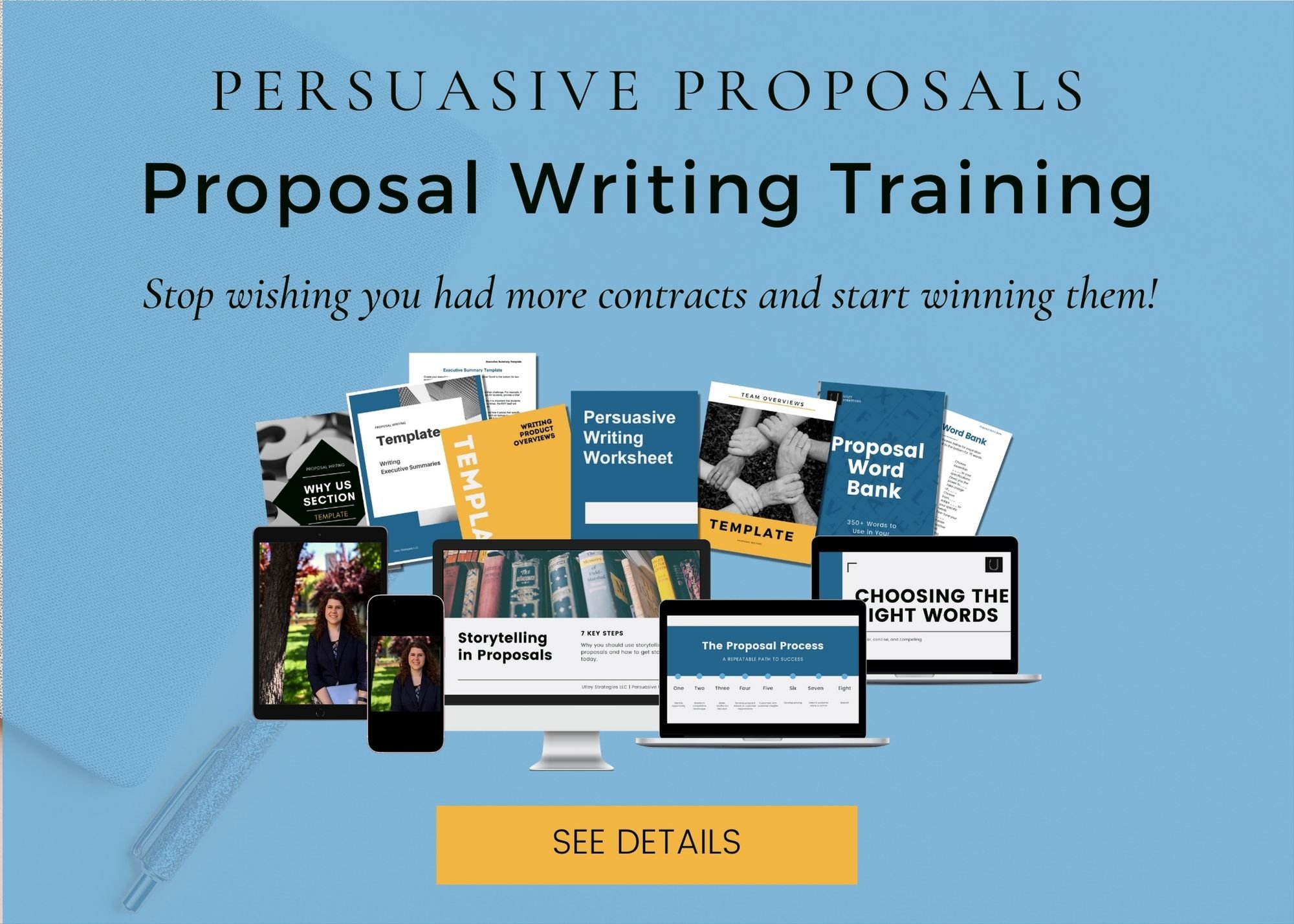Understanding RFP Win Rates (and how to improve)
The top goal for many companies when creating proposals is to increase the win rate. However, looking at the win rate alone does give you the full picture into if your approach to proposals is succeeding (or even sustainable). Read on to learn more about defining your proposal win rate and tips for how to increase it.
Watch as video:
What is a good proposal win rate?
Before diving into ways to increase your proposal win rate, let’s define a “good” win rate.
Your win rate will vary dramatically if you are responding to a completely new opportunity or one where you are the incumbent who already holds the contract. It has been found that incumbent win rates may be between 60-90% whereas new opportunities are up to 15%. These rates will also vary depending on if you have established a relationship before the customer went to RFP or if you are responding blind. Overall, having the relationship first will greatly increase your likelihood of winning.
Given all of this, the short answer to “what is a good proposal win rate” is “it depends”. Some companies take an aggressive approach to RFPs and respond to as many as they can, which means many have a lower win rate (less than 20%) because they respond to so many. Others respond only to RFPs where they have been directly invited by the customer and are favored to win. Naturally, these situations result in a higher win rate.
Curious about how to achieve a higher win rate? The first step is to determine your approach to proposals to then establish a realistic, yet challenging, win rate goal.
How to Increase Your Win Rate
Develop Relationships Before the RFP
One of the best ways to increase your proposal win rate is to establish a connection with the customer before they go to RFP. There are a few ways you can accomplish this. Depending on your offerings and clients, establishing a capture approach for key contracts will allow you to develop a winning strategy and a stronger client relationship before they release the RFP. Another way to connect with the client before going to RFP is to have a targeted marketing strategy that places your company in front of the client while establishing trust and encouraging them to contact your sales team. Your marketing strategy may target specific accounts (recommended to align with a capture approach, budget permitted) or you may use your marketing to attract new clients who you may be able to sign before they go to RFP.
Whatever you choose, having a defined approach to engaging with clients before the RFP is released will give you insights that you can use in your proposal and ultimately help you win the contract.
Only Respond to Strong Opportunities
Another option for increasing your win rate is to narrow down the list of RFPs where you will respond. While it is tempting to create a proposal for any opportunity that aligns with your offerings, by narrowing down the list, you will be able to spend more time and resources creating stronger, more strategic proposals that are more likely to win or at the very least move you on to the presentation round. An easy way to narrow your focus is to create a scoring matrix of the best opportunities for your company. Once you know the most strategic RFPs, you can spend time responding to them, and leave the lower scoring RFPs for next time.
Know How Your Competitors Pitch
By nature, RFPs are very competitive, and with high value contracts on the line, many companies pull all hands on deck to create a truly competitive proposal. Because of this, it is ideal that you learn as much about your competitors and their approach to winning contracts as possible. If you are able to understand their approach, you can contrast that with why your company is a better fit, and sometimes you may even directly “ghost” the competition in your proposal.
There often is not enough time to collect information on your competitors once the RFP is released. It is recommended that you have some competitive information on-hand at all times for when the RFP is released. If you know your competitors support government clients, you can formally request to see their proposals using the Freedom of Information Act (FOIA). Simply submit a FOIA request to the appropriate agency requesting to see proposals for an opportunity where you know they bid. Most agencies will redact pricing information, but some do not. Even with redacted information, you will be able to learn more about how your competitors position their offerings and use that to create your win strategy.
Tailor Your Proposals
Even if you don’t take any of the previous steps (but especially if you do!), you should focus on creating tailored proposals that speak directly to the customer’s needs. Tailored proposals win more, and while they do take more time, it is worth the extra effort to win that contract. This does not mean you need to write all of your content from scratch. In fact, it is easier to tailor proposals if you have a starting library of proposal content, which you can then tweak for the specific customer. Maintaining a cohesive proposal story throughout the document(s) will also help the customer to truly understand why your company is the best choice for them.
Getting Started
Now that you know what to do, the hard part is getting started. You can pick and choose any of the above options, and even if you only implement one, your approach to proposals will be improved. If you need additional guidance or want to learn how to improve your win rate, we’re here to help.




